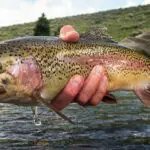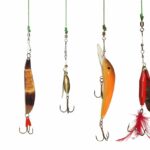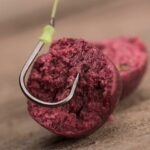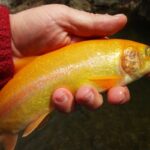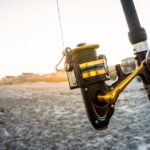Steelhead and salmon are two popular fish species common in saltwater. Their similarities in appearance, habitat, migration, and taste make it difficult to tell them apart. Both belong to the same family of Salmonidae, taste almost the same, and are anadromous. However, if you examine them closely, you’ll discover subtle differences.
You don’t have to go on a fishing expedition to catch the two and compare them. In this steelhead vs salmon guide, we’ll explore the two salmonids, discover what they are, their similarities and differences, and more. In the end, you’ll be able to identify the two trout species and determine which suits your palate and health.
What Is Steelhead?
Steelhead trout are a version of rainbow trout that begin their life in freshwater before migrating to the ocean. While they are classified as trout, steelhead act a lot like salmon. Steelhead trout belong to the Salmonidae family, which includes variations of charr and salmon in addition to trout.
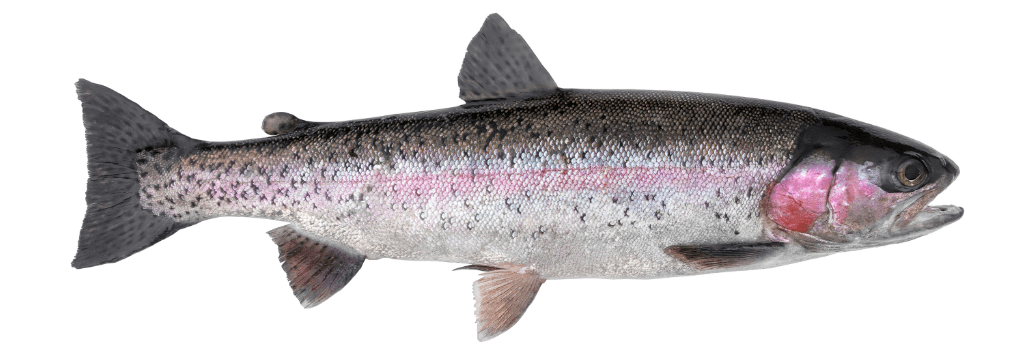
After a period of time in saltwater, steelhead trout return to their native freshwater for spawning. Unlike salmon species, steelhead trout are smaller and spawn several times during their lifetime.
Contrarily, a rainbow trout that spends its entire life in freshwater will not grow to become a steelhead trout.
What Is Salmon?
Salmon is a common name for several euryhaline ray-finned fish species that belong to the Salmonidae family, genus Oncorhynchus in North Pacific and genus Salmo in North Atlantic. The main varieties in the salmon family are the Pacific salmon and the Atlantic salmon.
Common species of Pacific salmon are king, coho, chum, pink, and sockeye. The Atlantic Salmon is the only salmon variety native to the Atlantic Ocean.

Like steelhead trout, salmon fish are anadromous. They migrate to saltwater to grow and return to freshwater during spawning.
Most pacific varieties don’t make the journey back to the sea after spawning. Instead, they die from exhaustion in the streams. Only the Atlantic salmon makes it back to the sea.
Steelhead vs Salmon: How To Tell the Difference
Here is a quick comparison between the steelhead trout and salmon.
| Steelhead | Salmon | |
| Size | 45” maximum, 20-25” on average | 58” maximum, 20-40” on average |
| Weight | 40 pounds maximum, 20 pounds on average | 126 pounds maximum, 30 pounds on average (Chinook/King Salmon) |
| Appearance | Pink stripes along the flanks, white mouth | Small dark spots, dark mouth |
| Habitat | Lives in saltwater but migrates to freshwater to spawn | Lives in saltwater but swims upriver to spawn |
| Lifespan | 4-11 years | 2-7 years |
Let’s now explore how steelhead and salmon fish compare in detail.
Steelhead Trout vs Salmon: Habitat and Migration
Steelhead trout are native to the streams and rivers of the Pacific basin in North America and Northeast Asia. They prefer cold-water tributaries because of the dissolved oxygen, which is ideal for spawning.
After hatching, steelhead trout live in streams and rivers as rainbow trout before migrating to the Pacific Ocean. They spend some of their youth in freshwater and swim downstream to the ocean, where they grow to maturity. They can choose to live as freshwater trout fish or swim downstream to the ocean.
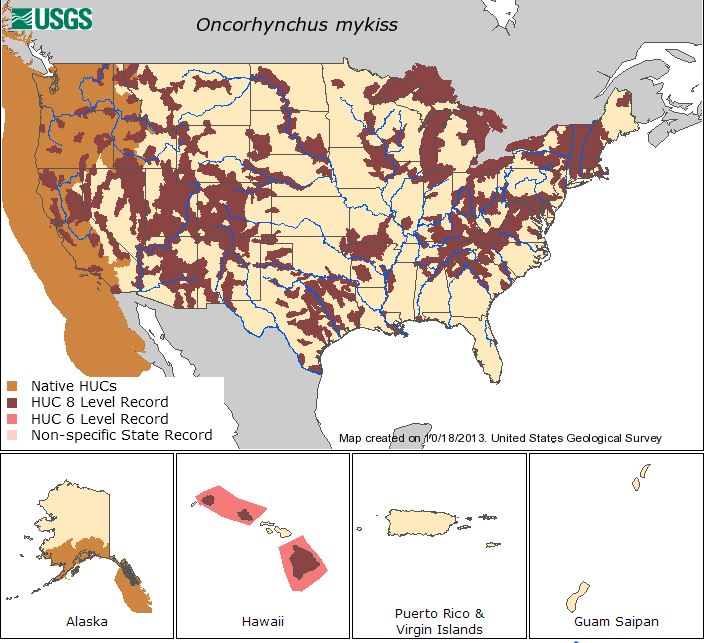
After two years in the ocean, steelhead trout swim back to their original hatching spots to spawn. This migration occurs in August or September.
Salmon species are native to streams and rivers of the North Pacific and North Atlantic basins. Like steelhead, salmon hatch in the cold-water tributaries and spend their youth in the freshwater before migrating.
Unlike steelhead, salmon don’t choose whether to stay in the rivers or swim to the saltwater. They all migrate to the ocean to grow to maturity.
Salmon spend 2-4 years in the saltwater before reaching full maturity. They’re common in the Pacific Ocean, and only one species lives in the Atlantic Ocean. Upon reaching full maturity, salmon swim back to their original hatching spots to spawn.
The long treacherous journey and spawning period leave these fish drained, resulting in death. However, most Atlantic salmon survive and return to the ocean to repeat the cycle.
Steelhead Trout vs Salmon: Appearance
These saltwater fish can be hard to tell apart by appearance. Their bodies have a bright chrome or silvery coloration and a back that ranges from dark to black.
Steelhead and salmon feature a similar torpedo-like body shape, making it more challenging to tell them apart.
Salmon steelhead trout have pink stripes that may appear faint red along their flanks. The stripes extend to the steelhead fish’s gill plates. These fish share this trait with the rainbow trout.
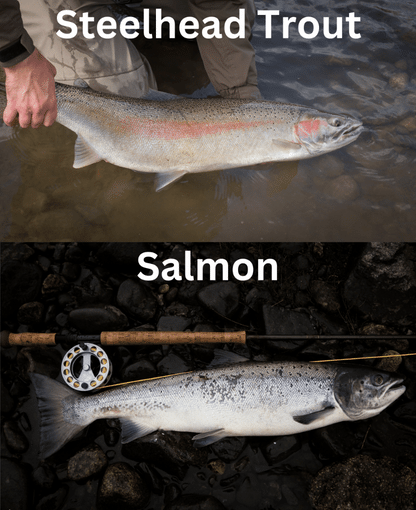
Be cautious when using this trait to identify the fish because not all steelheads feature similar colored stripes.
On the other hand, a salmon fish has small dark spots on its head, body, and fins.
Another distinctive feature between the steelhead trout and salmon occurs in the mouths and gums.
Steelhead trout have white gums and mouths, while the gums of Pacific salmon can be dark or black. The Atlantic salmon’s gums and mouths are white.
Steelhead vs Salmon: Size and Weight
Steelhead trout and salmon differ in size and weight. An adult steelhead trout is smaller and weighs less than an adult salmon.
An adult steelhead salmon grows to an average length of 20-25 inches. You’ve probably caught a salmon if you reel in a steelhead-looking fish longer than 25 inches.
However, this may not be the most accurate way to determine the type of fish you’ve caught. Some adult steelhead trout are known to grow to a maximum of 45 inches long. The longest steelhead trout ever caught measured 46 inches long (unofficial).
On the other hand, adult salmon reach at least 20 inches long but will grow up to 40 inches long. Below are the average lengths of various salmon species:
- Pink Salmon: 20-25”
- Sockeye salmon: 20-30”
- Coho salmon: 25-30”
- Chum salmon: 25-30”
- Atlantic salmon: 25-35”
- Chinook salmon (king salmon): 30-40”
Some adult salmon reach a maximum of 58 inches long. Adult steelhead trout weigh around 20 pounds, but some can reach 40 pounds. With such a steelhead trout, inexperienced anglers might believe they’ve caught a salmon.
In contrast, salmon will weigh more than steelhead trout. Some weigh 40-60 pounds, while others weigh over 80 pounds.
Steelhead vs Salmon: Lifespan
Steelhead trout can live up to 11 years, with an average lifespan of 4-6 years. On the other hand, salmon will live up to seven years, with an average lifespan of 4-5 years. Unlike steelhead, salmon die after spawning.
Steelhead Trout vs Salmon: Mating Habits
Adult steelhead trout migrate upriver to their original spawning spots, and spawning begins from late December through March. Upon arrival, females dig nests (redd) in areas with suitable water depth, velocity, and gravel composition. They deposit their eggs in the nests, and males fertilize them.
After the spawning season, steelheads migrate back to the sea for another cycle. Their eggs remain in the nests and hatch in 3-4 weeks.
Similarly, adult salmon migrate upriver to spawn in the freshwater. Males arrive first to compete for territories where the water flow is ideal. Females arrive later, and the spawning process starts between mid-October and December. Salmon females dig nests and invite the winning males to fertilize eggs.
Salmon females release thousands of orange eggs, and after fertilization, eggs will hatch in 3-4 months. After spawning, all the Pacific varieties die, leaving the young ones to start a new cycle.
Steelhead trout and salmon can crossbreed since they belong to the same family and genus.
However, this can prove difficult because the two have different spawning periods. Even if they meet in the same river, they won’t reproduce simultaneously.
Steelhead vs Salmon: Taste
Since steelhead trout and salmon come from the same family and spend much of their lives in saltwater, their meat tastes almost the same. That said, you’re likely to notice some key differences when eating both.
Steelhead trout tastes more like a trout, with a milder fish flavor. It’s no wonder most people who don’t like intense fishy flavor prefer steelhead trout over salmon. Steelhead meat is also less oily than salmon.
Salmon will have a more intense fishy flavor, unlike steelhead trout. People who prefer salmon love its rich taste, especially freshly caught salmon. Wild salmon has a more complex taste than farmed salmon. You’re less likely to notice the fishy flavor when cooked with spices and other ingredients.
Steelhead trout meat can be dark red, orange, or pink, depending on whether the fish is wild or farmed. On the other hand, salmon meat can be red, gray, or white.
Steelhead Trout vs Salmon: Recipes
Steelhead trout and salmon are relatively easy to cook, but you must be careful not to undercook or overcook them. Undercooking salmon can produce an unappealing texture, while overcooking can produce tough and chewy meat.
You can grill, bake, roast, or broil them to create tender, flaky meat. Unlike steelhead, salmon can be poached and seared.
After cooking steelhead or salmon using your favorite recipe, your fish will go well with various flavors such as spicy, sweet, sour, or salty.
There are numerous recipes for preparing steelhead trout and salmon. Below is a popular steelhead trout recipe:
Steelhead Trout Recipe
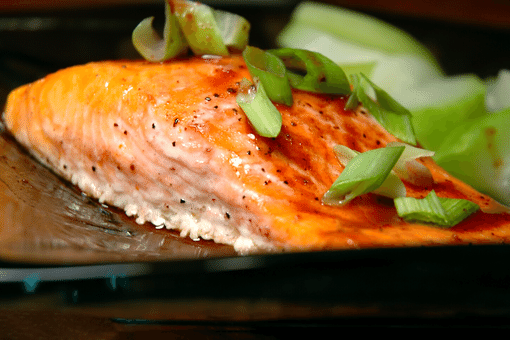
Ingredients
- Steelhead trout fillets
- chopped rosemary
- Olive oil
- One clove of chopped garlic
- One lemon zest
- Pepper to taste
- Salt to taste
Preparation
Set the oven temperature to around 425 degrees and line your baking pan with foil. Coat the foil with olive oil to ensure your fish doesn’t get stuck. Place the fish and season with salt and pepper. Spread a mixture of rosemary, lemon zest, garlic, and olive oil over your fish.
Reduce the heat to about 325 degrees, and use the second rack to broil your fish. Broiling should not exceed five minutes. Bake the fish for about ten minutes and ensure it’s not cooking too quickly. Your fish should be ready after ten minutes.
Salmon Recipe

Ingredients
- Salmon fillets
- Minced garlic
- Olive oil
- Salt to taste
- Pepper to taste
- Lemon juice
- Finely chopped dill
Preparation
Set your oven to 350 degrees. Grease your baking dish and season your fish with pepper and salt. Place the fish in your baking dish and pour the garlic, dill, lemon juice, and olive oil over the salmon. Bake the fish for about 15-20 minutes.
After baking, broil it for about one minute and increase the heat to about 425 degrees. You can garnish your salmon with lemon slices before serving it.
Conclusion
We hope this steelhead vs salmon comparison guide has covered everything you need to know about the two fish.
Despite being from the same family and spending most of their lifetimes in saltwater, steelhead trout and salmon have differences. They’ll differ in taste, size, weight, color, lifespan, and mating habits.
Both fish are delectable when prepared well. Use the above recipes to prepare your favorite fish then serve your family or friends.
- Do You Need An Indicator For Nymph Fishing? - November 16, 2023
- Fishing Safety Tips For Families - September 25, 2023
- What Is The Best Time To Night Fish At A Lake? - September 18, 2023


